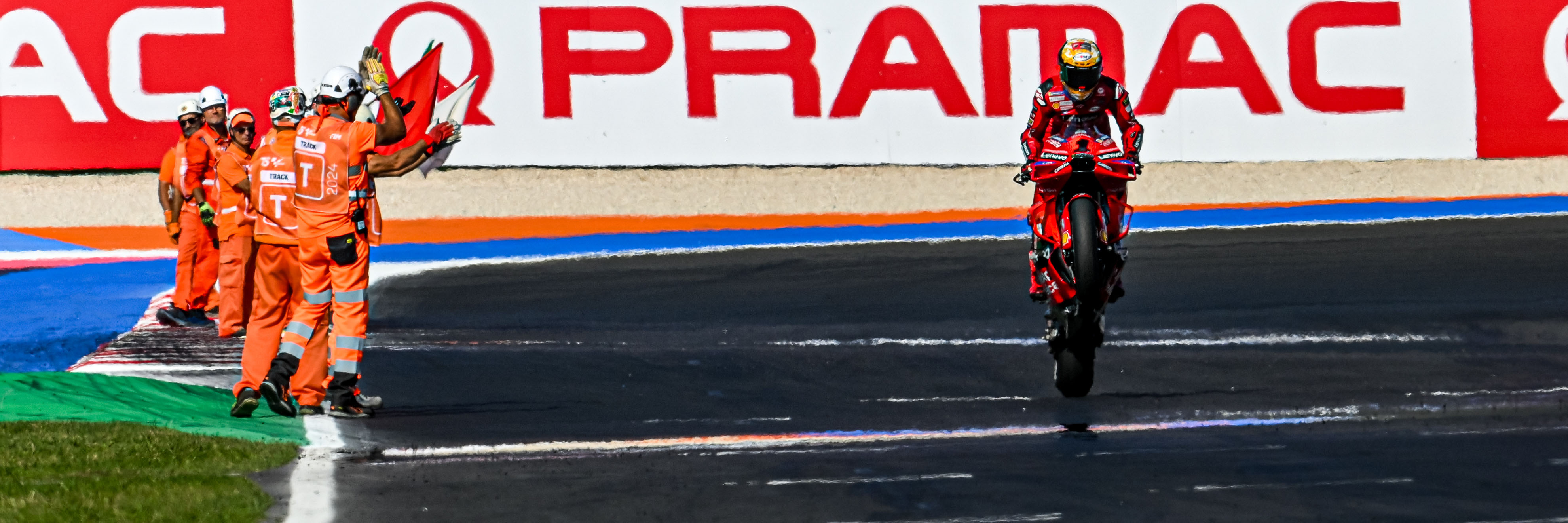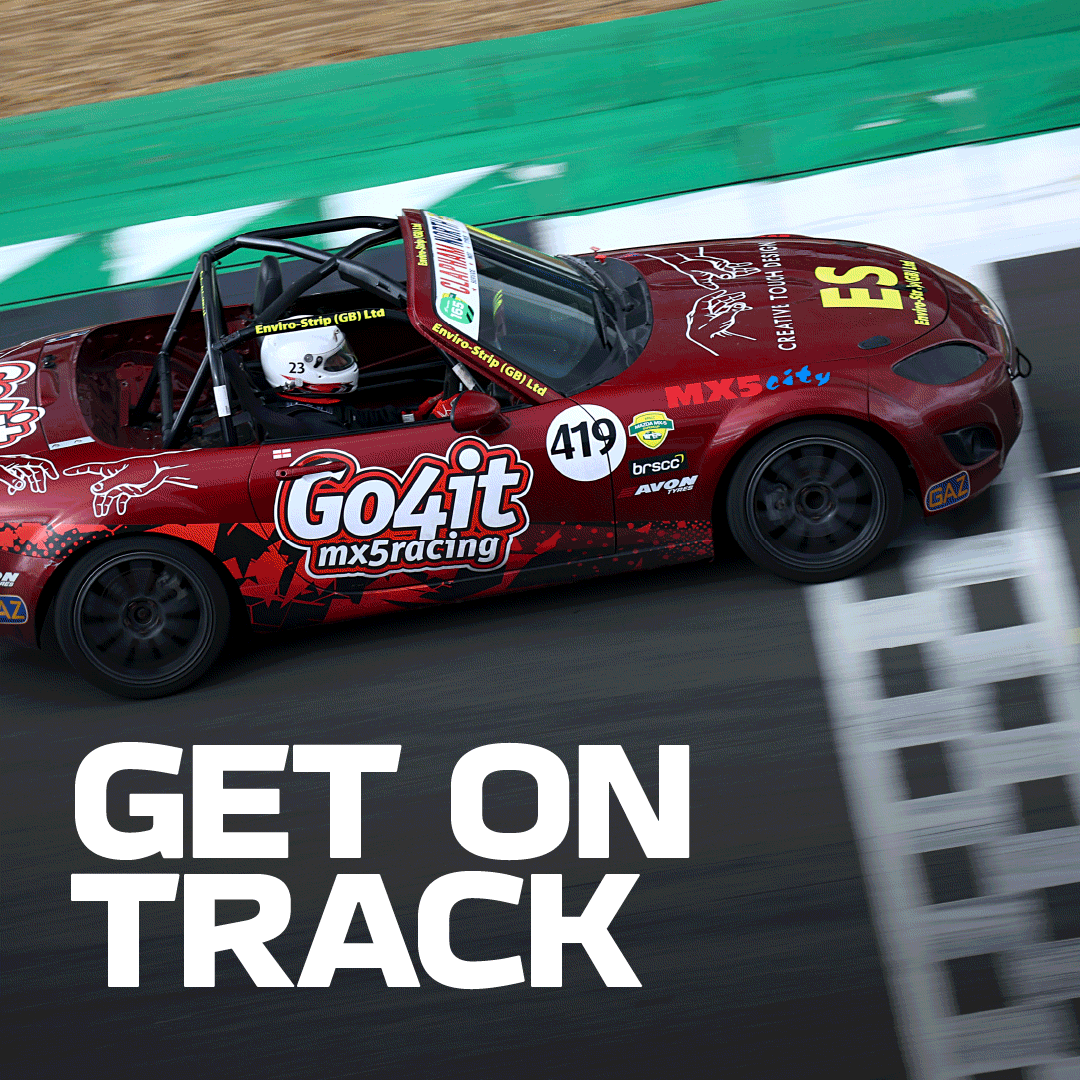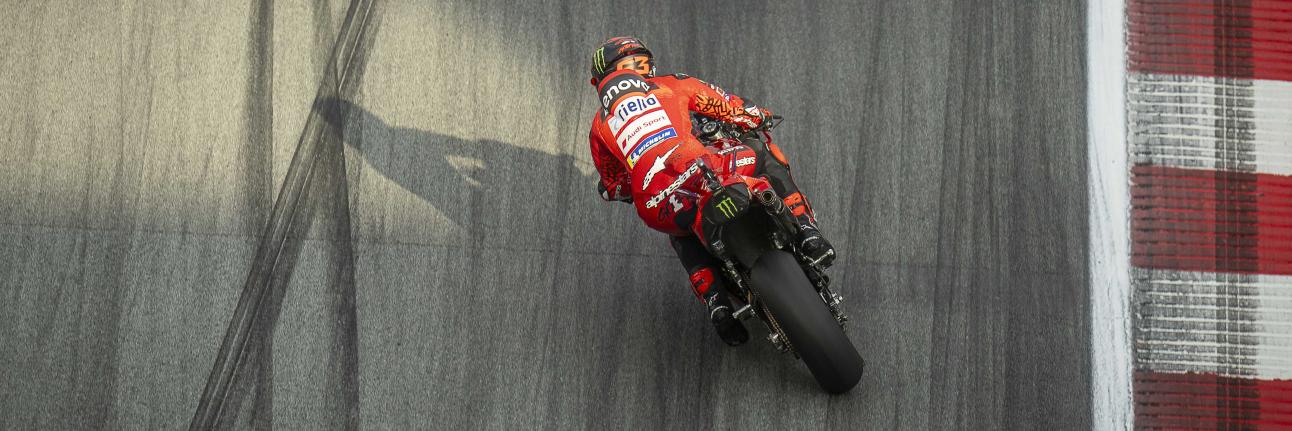
MotoGP Glossary: A-Z of the most used terms
13 January 2025MotoGP terminology differs considerably from the phrases four-wheeled racing fans are accustomed to, so if you’re looking to dip your toe into the world of two-wheeled motorsport look no further than our glossary for the premier class of motorcycle racing!
MotoGP's most used phrases
Aero-body
The aero-body comprises four key aerodynamic components of a MotoGP bike, including the front fairing (with wings), rear-wheel covers, front mudguard and forks and the seat unit. Manufacturers are permitted one upgrade to these parts during the season and are specific to each rider, rather than a team or manufacturer.
Airbags
Airbags are something we’re all familiar with in our road cars, but those found in MotoGP are a little different; they are fitted directly into a riders' suit and deploy when an impact is detected. The airbags inflate around the collarbone and shoulders to reduce the chances of injury.
Backing it in
This is a common technique in modern MotoGP in which a rider uses the rear brake to initiate a rear tyre slide entering a corner. The main purpose is to slow down quickly and sharpen the direction change. While there is plenty of lap time to be found in deploying this method, it’s a tough tightrope to walk; slide the rear too much and it could end in a dreaded highside crash!
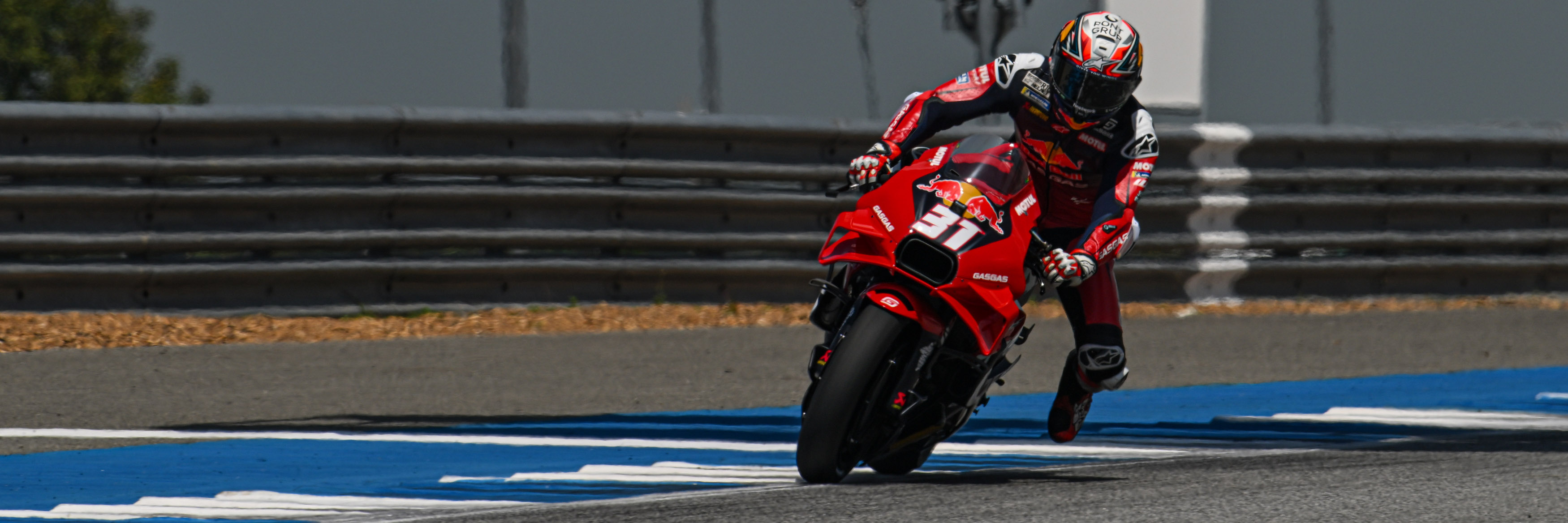
Behind the bubble
This term describes a rider tucking in tightly behind the bike's windscreen – or bubble – to reduce aerodynamic drag on the straights and maximize their top speed.
Fairing
This is the bike's outer shell and is typically made from carbon fibre. Just like in car racing, the outer bodywork is designed to minimise air resistance while protecting the internal components of the bike as much as possible.
Flag-to-flag
A flag-to-flag race is one that starts in one condition – be it dry or wet – and switches to the other while riders are circulating. In this scenario, MotoGP riders can switch to a second bike that is set up to suit the conditions, allowing the race to continue without interruption.
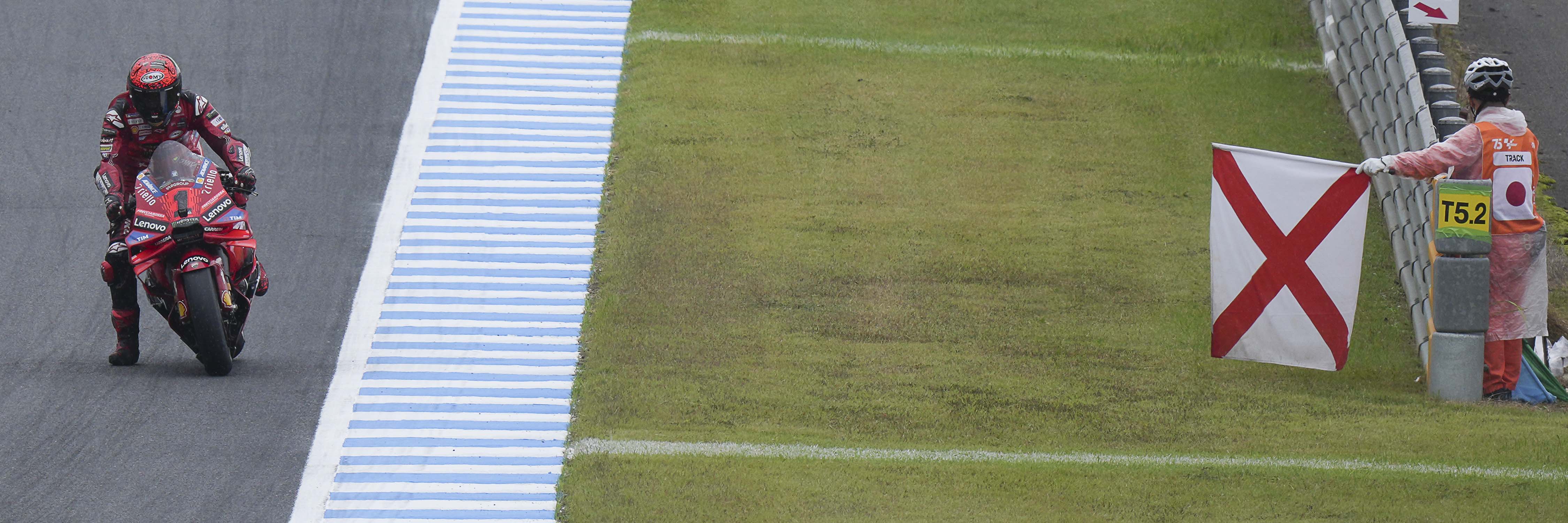
Front forks
These are the front suspension components connecting the wheel to the frame and play a crucial role in maintaining a bike’s stability.
Highside
The most feared of MotoGP crashes; a highside sees the rear tyre slide beyond the limit of adhesion before quickly recovering grip causing a violent snap. The sudden direction change routinely flings the rider over the top of the bike in an alarming crash.
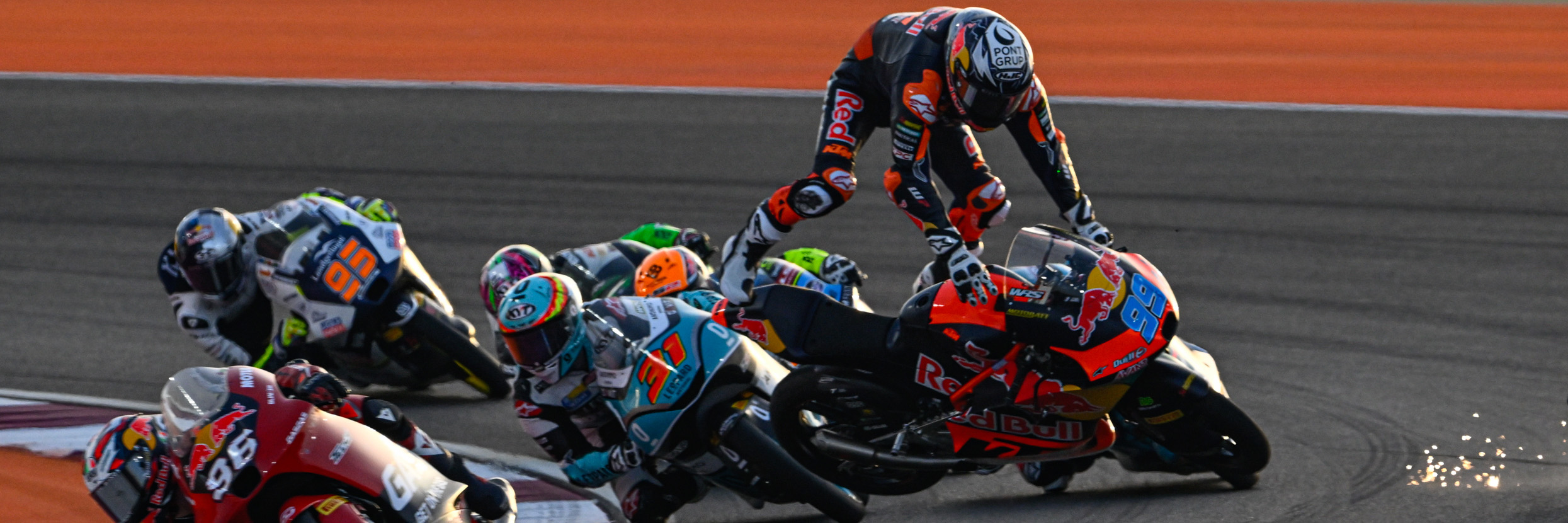
Holeshot
If a rider gets the holeshot, it means they have taken the lead into and through the very first corner of a race.
Lean angle
The degree to which a rider leans the bike over to one side in a corner. Sliding your knees along the track surface is common practice in MotoGP’s modern era, but the fastest riders will often take their lean angle to such extremes as grazing the track with their elbows!
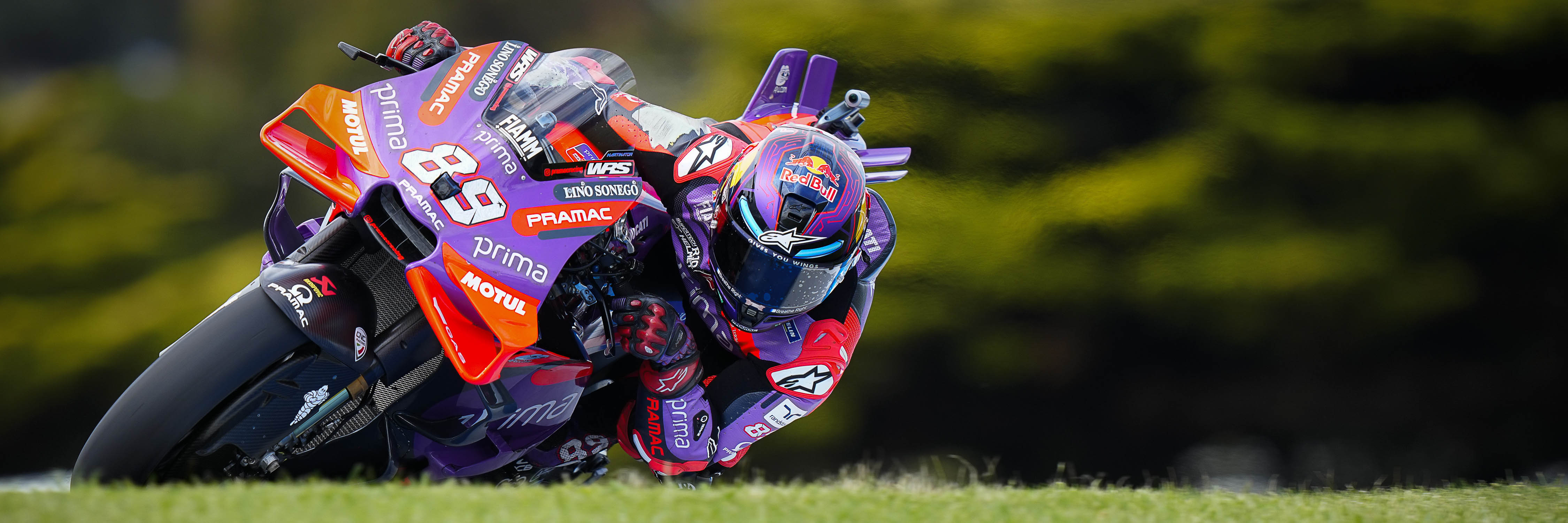
Leathers
Leathers are a MotoGP rider’s equivalent to a racing driver’s fireproof overalls. These protective leather suits are designed to withstand high levels of friction if a rider falls from their bike and slides along the track at speed, and are fitted with those all-important airbags we mentioned earlier.
Lowside
While the rear tyre eventually grips up again in a highside, there is no snap back to grip in a lowside as the bike falls out from underneath the rider. Although this is considered less dangerous, a lowside often ends with both bike and rider sliding into the run-off area together and can sometimes end with a rider being hit by their own bike, so it’s still an incident to be avoided.
Tucked the front
Instead of losing the rear like in a highside or lowside, tucking the front is when a rider loses grip on the front tyre and drops the bike while cornering, usually at low speeds.
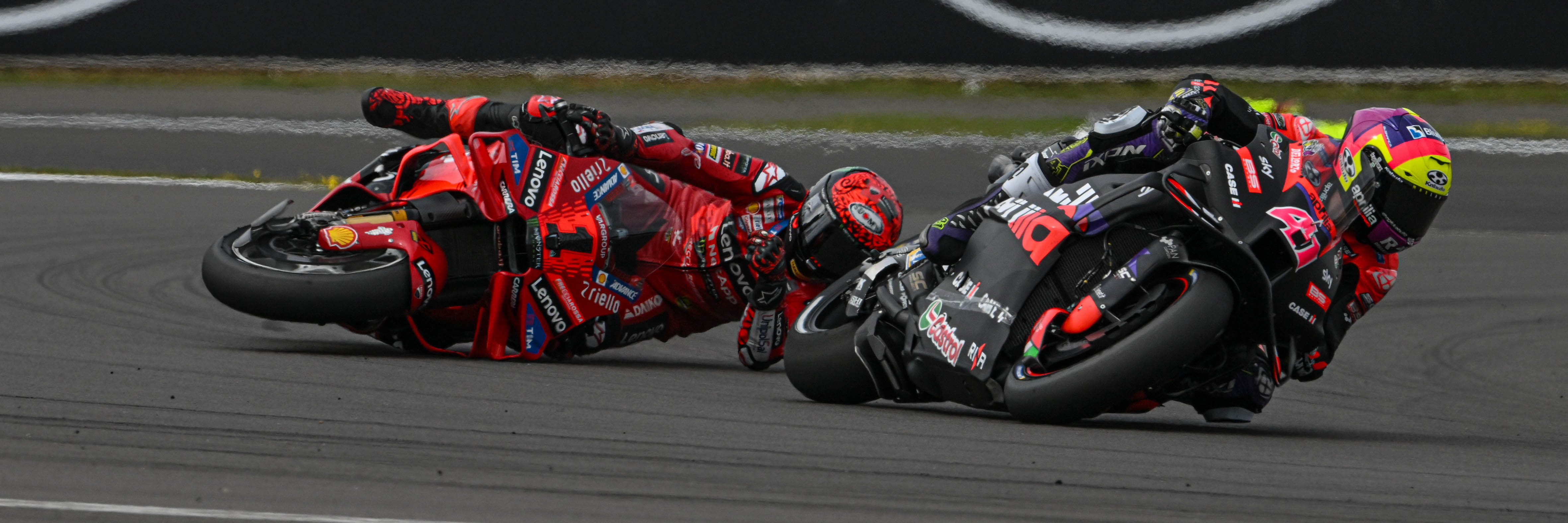
Independent Team/Rider
Once referred to as Satellite Teams and Riders, Independent outfits lease a bike – often the previous season’s iteration – from the manufacturer for the year. These teams have far fewer resources like parts and personnel than the full-fat factory teams. The current Independent MotoGP Teams are: Pramac Racing, Gresini Racing MotoGP, VR46 Racing Team, WithU Yamaha RNF MotoGP Team, LCR Honda Castrol/Idemitsu, and Tech3 KTM Factory Racing.
Spec
Specification, or ‘spec’ for short, usually refers to which iteration of bike is being ridden. For example, a manufacturer will have a factory-spec bike with all the bells and whistles, while a B-spec may not have the latest aerodynamic updates compared to an A-spec. If an Independent Team is using last year’s model, they will be on a 2024-spec bike.
Stoppie
A manoeuvre where the rider stops the bike with the front brakes only, lifting the rear wheel off the ground while maintaining control – some might say a reverse wheelie.
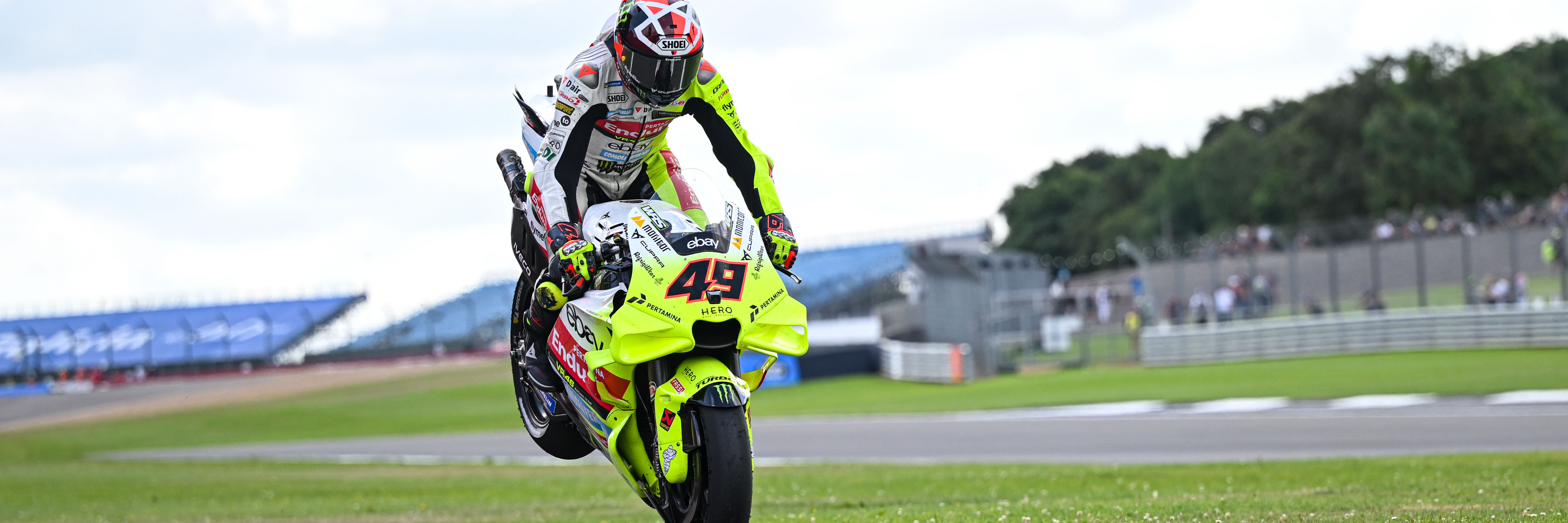
Swingarm
A swingarm connects the body of the motorcycle to its rear wheel and plays an important part in the bike’s overall handling.
Wheelie
Lifting the front wheel off the ground by accelerating sharply and pulling up on the handlebars. If a rider has enough of a leading gap, they will often celebrate a race win by crossing the line while performing a wheelie.
